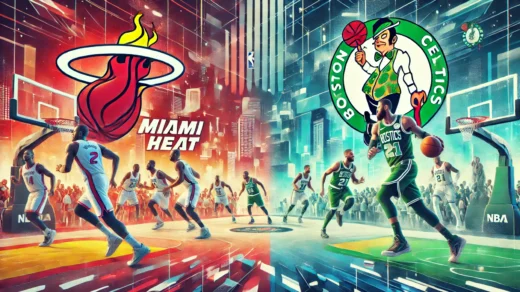drawing:cul23ybyzfm= basketball A Comprehensive Guide for Artists
Drawing basketball scenes, players, and equipment is an exciting and dynamic way to bring a sport loved by millions to life on paper. Whether you’re a beginner or an experienced artist, exploring drawing:cul23ybyzfm= basketball can enrich your skills, helping you capture movement, emotion, and energy. This guide covers everything you need, from tools and techniques to advanced strategies that make basketball-themed art stand out.
Why Draw Basketball? Benefits for Artists
Basketball combines action, emotion, and spirit, making it an inspiring subject for artists. When you explore drawing:cul23ybyzfm= basketball you’re not only learning to capture the movement but also developing essential skills, such as understanding anatomy and perspective. Sports art like this enhances fine motor skills and spatial awareness while allowing artists to experiment with styles and mediums. For young artists especially, basketball-themed art is a way to express creativity and passion for the game.
History of Basketball in Art
Basketball has influenced various art forms for decades, from classic illustrations to modern digital renderings. Its visual impact has inspired artists worldwide, who have depicted legendary players, iconic game moments, and the sport’s community spirit. Incorporating this history into your work can add depth, as you’ll be drawing within a rich tradition of athletic art. Whether drawing players in action or simply sketching a basketball, understanding this history can give you a foundation for your work.
Understanding Movement and Anatomy in Basketball Drawings
Capturing movement in drawing:cul23ybyzfm= basketball is crucial for creating dynamic, realistic pieces. Basketball players are in constant motion, jumping, pivoting, and sprinting. To illustrate this:
- Gesture Drawing: Use gesture sketches to capture the energy of players. Draw quick, loose sketches that convey movement rather than details.
- Anatomy of Players: Focus on anatomy by studying how limbs bend and muscles contract during basketball actions. Basketball players are often lean and tall, so depicting long limbs and dynamic poses is essential for realism.
- Proportion: Pay attention to proportion, especially during action scenes. The elongated arms during a jump shot or extended legs when sprinting add believability to your art.
Essential Tools for Basketball Drawing
Selecting the right tools for drawing:cul23ybyzfm= basketball enhances your ability to capture details and textures. Here’s what you’ll need:
- Paper: High-quality paper provides a solid canvas for detailed work.
- Pencils: A range from 2B to 6B is ideal for depth and shading.
- Eraser: A quality eraser is essential for refining lines and perfecting details.
- Colored Pencils or Markers: Choose vibrant colors like orange, black, and white to match basketball’s classic tones. Digital drawing tools, like tablets, are also helpful for experimenting with layers and effects.
How to Draw a Basketball: Step-by-Step Guide
Start your basketball art journey with a simple step-by-step drawing:
- Outline the Circle: Begin by drawing a perfect circle, which forms the base of the basketball. You can use a compass or trace a round object.
- Add the Lines: Draw one vertical line and one horizontal line intersecting in the middle, then add two curved lines to each side of these to represent the basketball’s distinctive pattern.
- Shading and Texture: Lightly shade one side to create a three-dimensional effect, considering where light hits the ball.
- Coloring: Orange is the traditional choice, but feel free to experiment. Adding highlights or patterns can make the basketball pop.
Popular Basketball Drawing Styles
In drawing:cul23ybyzfm= basketball there are several art styles to explore:
- Realism: Focuses on capturing every detail accurately, including textures, shadows, and proportions.
- Impressionism: Emphasizes the mood or feeling of the game rather than exact details, often through light brushstrokes or blurred lines.
- Pop Art: Uses bright, bold colors and stylized shapes to make a basketball drawing visually striking.
- Minimalism: Concentrates on simple lines and shapes, creating a clean yet powerful image.
Experimenting with these styles can help you develop your unique approach.
Techniques for Creating Realistic Textures and Shading
Textures and shading bring drawing:cul23ybyzfm= basketball to life by adding depth:
- Hatching and Cross-Hatching: Create texture with hatching (parallel lines) or cross-hatching (intersecting lines) for depth in shaded areas.
- Blending: Use blending stumps or cotton swabs to soften edges and create a smooth, realistic look.
- Layering Shadows: Build up shadows gradually for a richer, three-dimensional appearance. Pay attention to where light sources create highlights and shadows on the ball and players.
Composition Tips for Basketball Art
Composition in drawing:cul23ybyzfm= basketball is key to making the piece engaging. Techniques include:
- Rule of Thirds: Divide your paper into a grid and place important elements, like the basketball or a player, along these lines.
- Diagonals: Incorporate diagonal lines in the background or player’s posture to add movement and excitement.
- Overlapping Figures: Use overlapping to show depth, making one player look closer than another. This can add a three-dimensional quality to your drawing.
Drawing Basketball Scenes and Backgrounds
Enhance your basketball artwork by including scenes or backgrounds:
- Basketball Court: Draw the lines and markings for an indoor court or outdoor playground.
- Crowd and Benches: Include spectators or teammates in the background for a lively effect.
- Scoreboard and Equipment: Details like the scoreboard or hoops add context to your artwork.
Adding background elements can make a simple basketball drawing look like part of an intense game scene.
Common Mistakes in Basketball Art and How to Avoid Them
When working on drawing:cul23ybyzfm= basketball beginners often face challenges with anatomy, perspective, and proportions. Avoid these mistakes:
- Ignoring Proportion: Pay close attention to player proportions, particularly in action scenes.
- Forgetting Background: A well-placed background gives context and depth to the drawing.
- Rushed Shading: Take your time with shading to create a realistic effect. Gradually build layers to capture the basketball’s texture and shadows.
Tips for Personalizing Your Basketball Drawing
Adding personal touches to drawing:cul23ybyzfm= basketball makes it unique:
- Custom Colors: Experiment with non-traditional colors like blue or purple to add a modern twist.
- Team Logos: Add your favorite team’s logo for a personalized look.
- Background Elements: Include a meaningful scene, such as a home court or favorite court setting.
- Name or Jersey Number: Add your name or a player’s number to connect personally with your artwork.
Personalization lets your creativity shine through, making the piece special.
Practice Makes Perfect: Encouraging Consistency in Drawing
Improving atdrawing:cul23ybyzfm= basketball takes practice and patience:
- Daily Practice: Draw regularly to build consistency and improve skills.
- Experiment with Challenges: Try drawing different types of balls or basketball scenes to expand your range.
- Celebrate Progress: Recognize each improvement, even small ones, to stay motivated.
- Create a Safe Space for Expression: Practice in an environment where you feel free to explore, experiment, and make mistakes.
The journey of becoming a skilled basketball artist is one of constant learning and fun exploration.
Conclusion
drawing:cul23ybyzfm= basketball provides artists a rich canvas to capture the excitement, intensity, and beauty of the sport. By selecting the right tools, understanding composition and movement, and applying advanced techniques like shading and texture, artists can create realistic, engaging basketball-themed art. The process allows for creative expression, as artists personalize their work and explore various styles.
With time and consistent practice, drawing:cul23ybyzfm= basketball can become more than just an exercise; it’s a journey of artistic development that celebrates the spirit of basketball. Whether you’re drawing for fun or building a portfolio, this guide provides everything you need to get started and grow.


